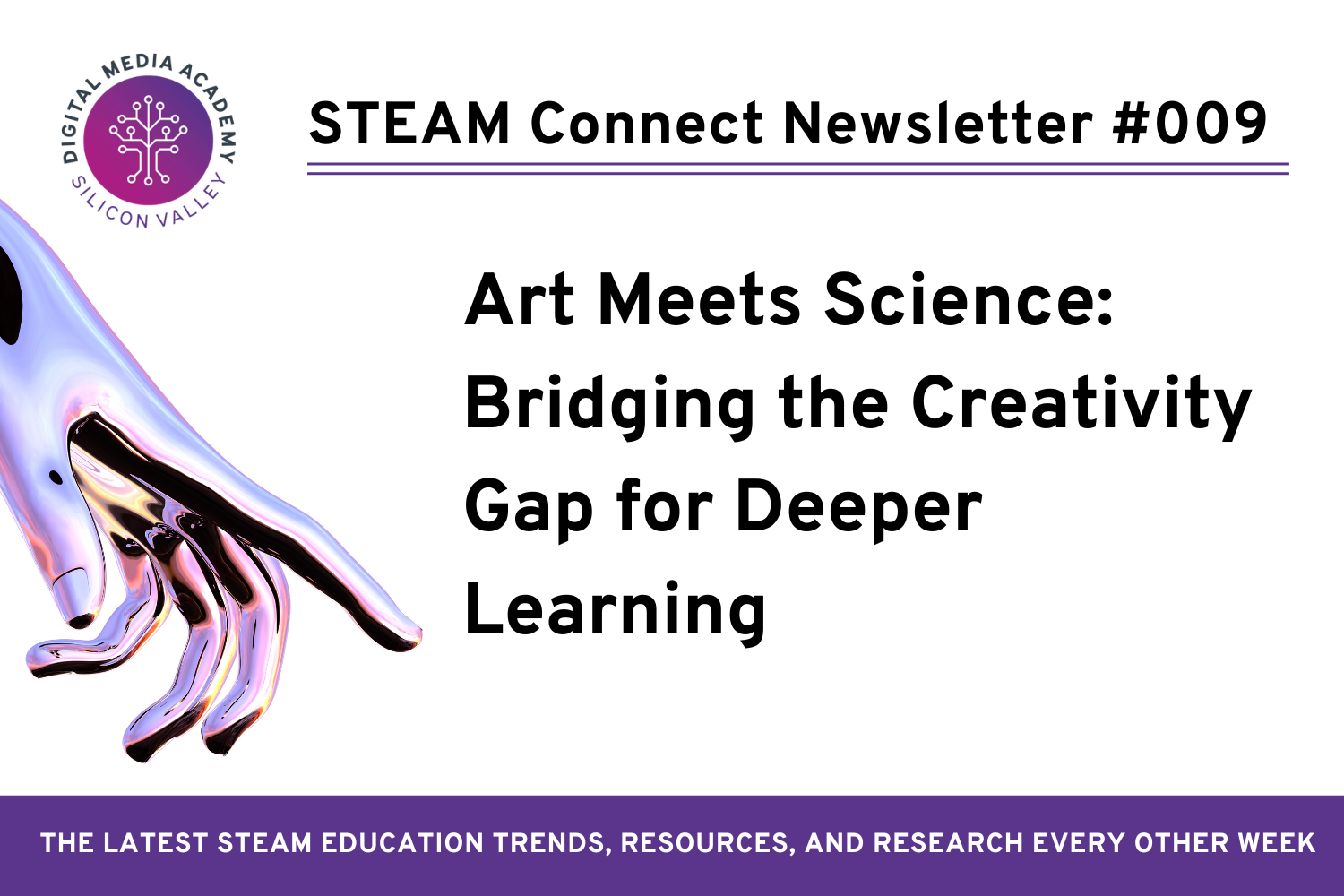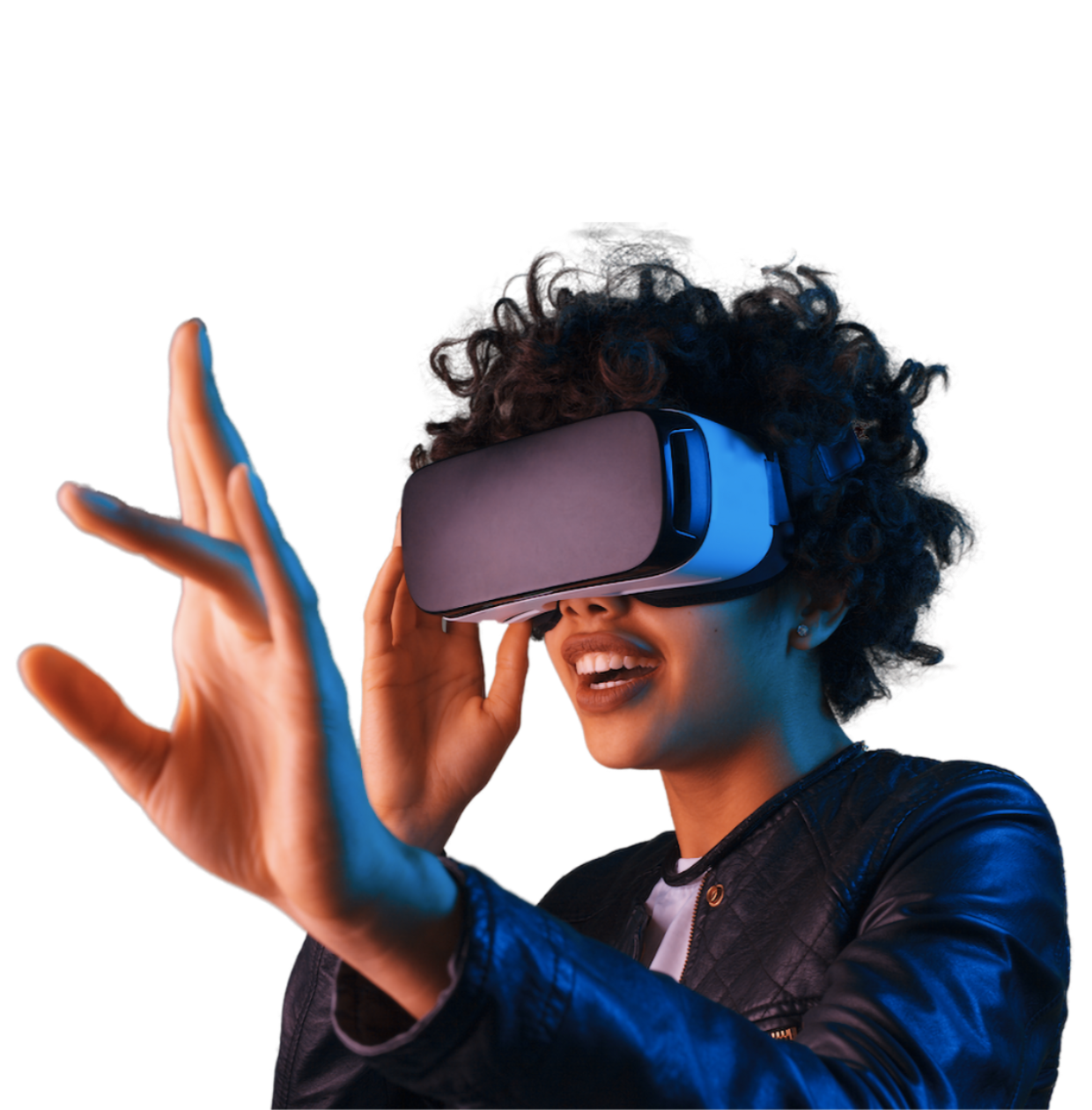Hello Educators!
Have you ever looked at a breathtaking sunset and marveled at the scientific dance of light and atmosphere?
Or perhaps been captivated by the intricate details of a flower and pondered the evolutionary marvel it represents?
This is the beautiful space where art and science collide, where seemingly disparate disciplines inform and inspire each other.
This week we’re exploring how STEAM fields can be woven together to bridge the creativity gap for richer learning experiences.
Let’s explore 🔭
Left brain vs. Right brain Myth
In a recent educatorRESET newsletter, I wrote about neuromyths in education. One of the most pervasive myths is the belief that individuals are either left-brained (analytical and logical) or right-brained (creative and intuitive). In reality, both hemispheres of the brain work together, and cognitive functions involve complex interactions across regions.
The oversimplification of the left-brain, right-brain theory has contributed to the misconception that art and science are polar opposites. When we see science and art as separate spheres, we miss the chance to leverage the creativity inherent in science and the analytical power that can enrich artistic expression.
The Art of Science
Here’s the thing: science isn’t just about memorizing facts and conducting sterile experiments. At its core, science is a human endeavor, driven by curiosity, a questioning mind, and a desire to understand the world around us. These are all inherently creative impulses.
This is where the “A” in STEAM comes in. Art isn’t just about painting and pottery; it’s about fostering innovative thinking, problem-solving, and the ability to see the world from different perspectives. When we combine science with artistic expression, we unlock a whole new level of understanding and discovery.
Art is often seen as a hobby, but countless careers demonstrate its power.
Breaking Down the Walls
While science and art are often regarded as distinct, in reality, history is rich with examples of brilliant minds who blurred the lines between science and art.
Leonardo da Vinci’s detailed anatomical sketches advanced medical understanding, while Maria Sibylla Merian’s insect illustrations revolutionized both botany and zoology. Even Steve Jobs’ calligraphy class influenced the user-friendly and engaging design of Apple products.
Today, people like Dr. Hideo Mabuchi (Professor of Applied Physics at Stanford University and ceramist), Dr. Susan McConnell (Professor of Biology at Stanford University and photographer), and Peter M. Lawrence, MS, CMI (Board Certified medical illustrator and researcher) continue to push the boundaries.
Perhaps my favorite example of science and art intersecting is a fascinating TEDx Talk I attended in 2014. To show that science and art are not mutually exclusive endeavors, Dr. Jennifer Gardy (Scientist), discusses the origins of culture and why we are genetically disposed to creativity while Peter Gregson (Celloist), takes genetic data and transforms it into a beautiful piece of music. The talk highlights that the roots of art, culture, and creativity, actually stem from a very, very scientific place.
These inspiring examples showcase the power of blurring the lines between science and art. As Albert Einstein eloquently stated, “The most beautiful experience we can have is the mysterious- the fundamental emotion which stands at the cradle of true art and true science.”
Bringing Art into the Classroom Holistically
Many traditional education systems create a divide between the analytical world of science and the expressive realm of art. However, STEAM initiatives break down these walls, fostering a more holistic approach to learning. Here are some strategies to weave art into your curriculum:
- Cultivate Curiosity: The Scientific Method, as taught in traditional science classrooms, is missing out on a crucial step: the creativity that leads to hypotheses. Encourage students to ask questions, not just accept answers. Design experiments that allow for exploration and discovery. Incorporate open-ended activities that invite artistic expression, such as sketching observations during a science experiment or creating a model of the solar system using found objects.
- Make Space for Diffused Thinking: Science and art thrive on focused inquiry, but they also require moments of relaxed thinking. Encourage “curiosity breaks” with doodling, music, or quiet reflection to spark new connections. Embrace “what if” scenarios and encourage wild ideas. Let artistic exploration guide scientific inquiry, using art as a springboard for further investigation.
- Embrace Multiple Perspectives: Discuss the history and philosophy of science, highlighting the role of creativity and artistic expression in scientific discovery. Explore different cultures’ artistic interpretations of scientific phenomena. For example, have students research and compare scientific illustrations from different historical periods.
- Artful Problem Solving: Challenge students to solve scientific problems through an artistic lens. This could involve creating a data visualization representing weather patterns over time, designing a poster about the importance of water conservation, or composing a song about the life cycle of a plant.
- Art Integration Across Subjects: Don’t limit artistic exploration to the art room! Collaborate with other teachers to find opportunities for cross-curricular integration. For example, a science teacher might work with a language arts teacher to have students write fictional stories set on a different planet based on scientific principles.
By incorporating these strategies, you can transform your classroom into a vibrant hub for STEAM education, where students can develop their scientific knowledge and artistic skills simultaneously.
Looking Ahead
The future belongs to creative thinkers and innovative problem-solvers.
A study by McKinsey Global Institute predicts that by 2030, automation could displace up to 800 million jobs worldwide. While Artificial Intelligence excels at data analysis and automation, it cannot replicate the human capacity for empathy, critical thinking, and creative problem-solving.
These very skills are consistently ranked as the top two needed in the workforce. As a result, the fusion of STEAM disciplines is critical to prepare students for a future filled with both opportunity and uncertainty.
The jobs of tomorrow will demand a unique blend of skills:
- VR Designers who understand human biology creating immersive experiences that not only entertain but also promote empathy and understanding – something AI currently struggles to replicate.
- Biomedical Engineers with artistic sensibilities could design medical devices that are as functional as they are aesthetically pleasing, prioritizing both efficiency and emotional well-being.
- Environmental Architects could combine scientific knowledge of sustainable building practices with artistic vision to create eco-friendly structures that inspire and connect with their communities, fostering a sense of environmental responsibility that goes beyond mere data analysis.
By embracing the beautiful synergy between science and art through STEAM education, we’re preparing the next generation of innovators – individuals who can seamlessly combine scientific expertise with artistic vision to tackle complex problems and create groundbreaking solutions – and ensuring our students maintain a competitive edge in the age of AI.
Equip your students with the skills needed for this exciting future at Global Innovation Race 2024

Limited seats added to Silicon Valley &
Registration Extended to May 31st!
Bring a group of 5+ students (aged 13-17) to Global Innovation Race 2024 at Stanford University and receive a year of Leading STEAM Schools in the World membership for your school. We also have GIR Scholarships available for school groups!
There are 3 ways we can help your school with your STEAM Programming:
🌍 Bring Students to Global Innovation Race on-campus at Stanford University (July 17-27th)
Fuel your students’ passion for technology and innovation while future-proofing their skills with the summer experience of a lifetime! Global Innovation Race is an international call to action for student groups (aged 13-17) across the globe to design solutions that will shape the future. Space is limited. Learn more here!
🌐 Join Leading STEAM Schools in the World
Developed by Stanford-affiliated educators and researchers, Leading STEAM Schools in the World (LSSW) Membership helps schools and educators meet the ever-evolving needs of 21st-century learners. Membership is customizable, combining comprehensive curriculum, tailored consultation, and a supportive global community of like-minded schools.
💡 Become a STEAM Innovator Accredited School
Our STEAM Innovator School Accreditation recognizes and promotes excellence in STEAM education worldwide while empowering educators and schools to achieve the highest standards of quality and innovation in STEAM curriculum, instruction, and assessment.






















